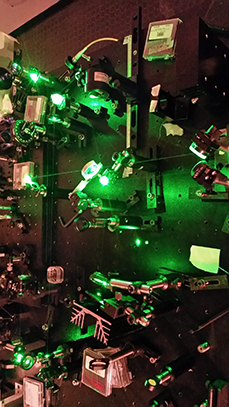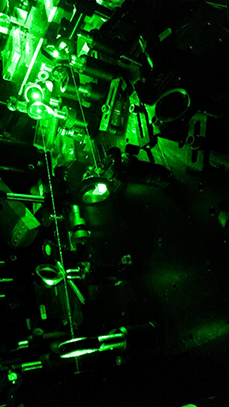Federico Pirzio, Jacopo Rubens Negri and Simone Tacchini
 |
During the 1990s, the impressive increase of telecommunications market gave incentive to the spread of optical devices and to the improvements in semiconductor growth technology, allowing a decisive step forward to semiconductor diode laser performances. The availability of new compact, reliable and efficient diode pump modules made easier the rapid growth of DPSSL (Diode Pumped Solid State Lasers), now representing the state of the art for the industrial market. In the last few years we especially focussed on: |
Federico Pirzio, Simone Tacchini
 |
High-power, ultrafast lasers technology has rapidly progressed over the past two decades. Thanks to a continual academic and industrial research, the cost and complexity of ultrafast lasers progressively decreased, making this technology available for a large, and rapidly increasing, variety of bio-medical and industrial applications. |
Federico Pirzio and Luca Tartara
 |
In the last years, fiber lasers have increasingly gained market positions previously occupied by other kinds of laser sources. The single-mode (high beam quality) operation, broad emission linewidth, high gain (expecially in MOPA configuration), high optical/electrical conversion efficiency, easy thermal managment, industrial reliability, low cost and the continuous increase in output power (kW level in CW operation) represent the main fatures which lead fiber lasers to be an attractive solution in many industrial and scientific applications such as: material processing, spectroscopy, medicine, telecommunications etc... In particular, at LSL we focus on passively (SESAM) mode-locked operation at 1 µm mainly in the picosecond region (1÷100 ps) for micromachinig application or nonlinear frequency conversion to directly access the mid-IR spectral range (up to 10 μm). Furthermore, numerical (MATLAB) models are continuously under development to allow better fiber amplifier and laser design. |
Federico Pirzio and Luca Tartara
 |
Many applications would benefit of the availability of coherent radiation in spectral region not covered at all, or extremely difficult to access with conventional laser sources. For instance, visible and UV laser sources play a crucial role in material processing and high precision manufacturing, whereas the InfraRed and Mid-Infrared spectral region are increasingly important for bio-medical, military and scientific applications. |